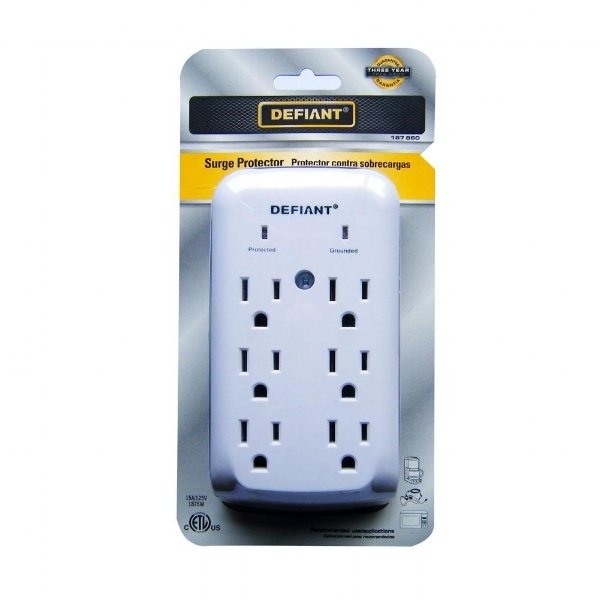UNDERSTANDING YOUR SURGE PROTECTOR
If you own a computer or other electronic equipment, you probably own a surge protector. Most surge protector designs serve an immediately apparent function, which is allowing you to plug various components into a single power outlet. But, there is much more to it than that.
What is the purpose of a surge protector?
Surge protectors guard electronics from surges in electrical power. A power surge, which is also called transient voltage, is an increase in energy that’s above the average level of electricity flow. In typical office and household wiring in the US, the standard voltage is 120V. If it’s above 120V, that’s a surge, and surge protectors help prevent that problem from destroying delicate electronics.
How does voltage work?
It’s easier to know something about voltage before trying to understand more about surge protection. It’s a measure of the difference in the electric potential energy. An electric current travels from point to point, there’s a higher electrical potential energy on the originating wire’s end than on its other (outlet) end. It’s the same kind of principle which urges water under pressure to flow out of the hose: a higher demand on the hose’s end pushes water toward a place of lower pressure. You may think of the voltage as the measure of the electric force.
How surges cause damage
Once the surge is high enough, it may inflict massive damage on electronics and even wiring. The effect is similar to applying water pressure to the hose. If there is too much water pressure, the hose will burst. In the same way, when too much electricity runs through a wire, it heats up like a filament in the light bulb and starts to burn. Even though increased voltage may not break your electronic immediately, it can put extra strain on it, and weaken components.
How a surge protector works
A typical surge protector passes the current along from an outlet to several electronic and electrical devices plugged into the power strip. Once the voltage from an outlet surges, the surge protectors divert extra electricity into the grounding wire of an outlet. In a basic surge protector, there’s a component known as MOV or metal oxide varistor, which diverts excess voltage and prevents damage to the electronics.
For this reason, using a surge protector for delicate electronics is well worth the money. If a homeowner finds they have more electronics and a greater vested interest in protecting them, or the home is located in an area with frequent power surges, an electrician can install a whole house surge protector to protect electronics and also the wiring of a home.
Trust Kennedy Electric for expert hot tub electrical, exhaust fan installation, ceiling fan installation, whole-house electrical surge protection, GFCI outlet installation, and other residential electrical services in Citrus, Hernando, and Pasco Counties. Book a service by calling us at 352-799-3434.



